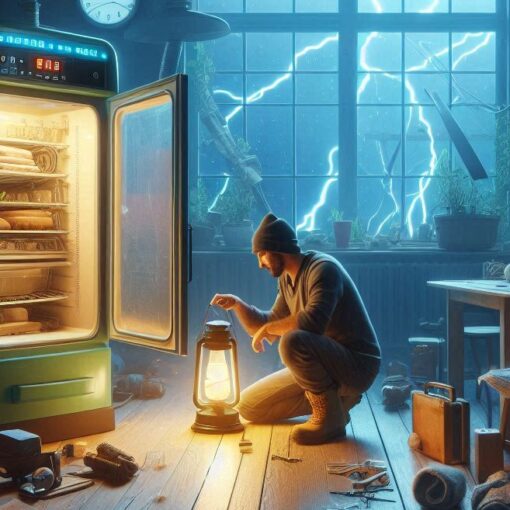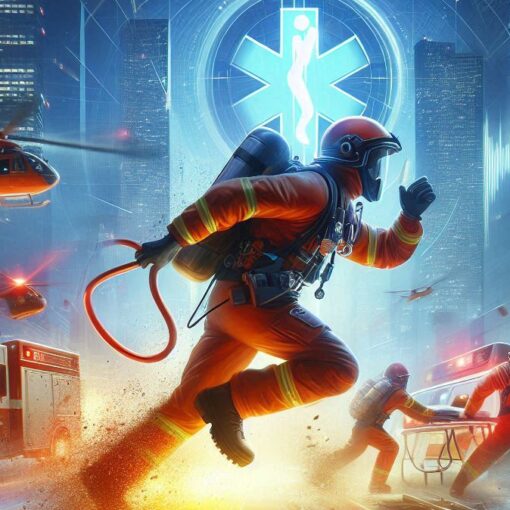Please Note: This post may contain affiliate links. If you click one of them, we may receive a commission at no extra cost to you. As an Amazon Associate, I earn from qualifying purchases.
Top Takeaways and Key Concepts
- Identify fears early by writing them down to understand what triggers anxiety.
- Research real risks in your area to replace fear with knowledge and practical awareness.
- Build a simple emergency plan so everyone knows what to do in a crisis.
- Prepare an emergency kit with essentials like water, tools, food, and personal items.
- Practice staying calm using breathing, focus, and positivity to think clearly under pressure.
Summary of This Article
This article explains how to turn fear into preparedness by understanding it, learning from it, and using it as motivation to take action. It encourages identifying your specific fears, building knowledge about real emergencies, and creating a practical emergency plan. It also explains how to build an emergency kit and stay calm during stressful moments through simple techniques like deep breathing and focusing on what you can control. With preparation and a confident mindset, fear becomes fuel for readiness instead of panic.
Short Video Version of this Article
Fear may be a cunning thing. You’re psyched about a marathon of zombie movies one minute, and the next, your cat makes a strange noise and you think it’s planning to take over the world. Isn’t that crazy?
But what if? What if you redirected your fear into something good instead of letting it lock you in place? Yes, even when you’re worried about calamities! It’s all about modifying how you feel.

Think about this. You sense a tiny bit of fear. Don’t panic; instead, take a deep breath. What if that worry is merely a sign? A reminder to get ready? You can turn those nerves into smart strategies and steps. Maybe it’s about having a good emergency kit or just knowing where to find the flashlight when the power goes out.
Take a moment to think about it. When you start to feel scared, ask yourself, “What can I do?” That’s your time to take control. You can get ready by doing research and making plans. Instead of “What if?” say “I got this!”
So, the next time you feel scared, remember that it’s just a little monster that wants your attention. Put it to use. You will be more sure of yourself when you have to deal with something. You can turn panic into readiness, like it’s simply another step on your journey!
Understanding Your Fear
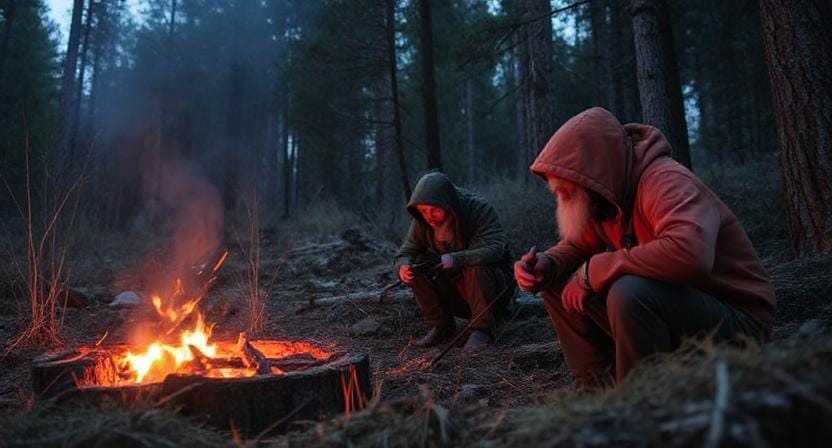
First things first: let’s acknowledge that fear is completely normal. Whether it’s the thought of an earthquake shaking your house or just realizing you’ve run out of coffee on Monday morning, everyone has something that sends them into a tailspin. By the way, I think recognizing what scares us is half the battle.
Take a moment to think about your fears around emergencies. Are they real worries, or are they just those silly thoughts that bounce around in your head at 2 AM when you can’t sleep? You know, like the “what if” monsters that pop up just when you’re trying to drift off?
It helps to write those fears down. Seriously. Once you see them on paper, they often look way less scary. It’s like finding out that the monster under your bed is just your old shoe! You can’t help but laugh, right?
When you understand your fears better, you can tackle them instead of letting them hang out in your head like that leftover pizza you forgot about. Facing those fears often makes them seem smaller. Like, yeah, you realize you can actually handle them.
Imagine sitting down with your list of worries. You see them clearly, and it’s like turning on a light in a dark room. Suddenly, it’s not so scary anymore. You can think of practical steps to take, like making a plan or packing an emergency kit. Each little step makes a difference.
This isn’t about getting rid of fear entirely. It’s about learning to dance with it. You can turn those scary thoughts into action. Facing fears can actually make you stronger. You got this!
Knowledge Is Power
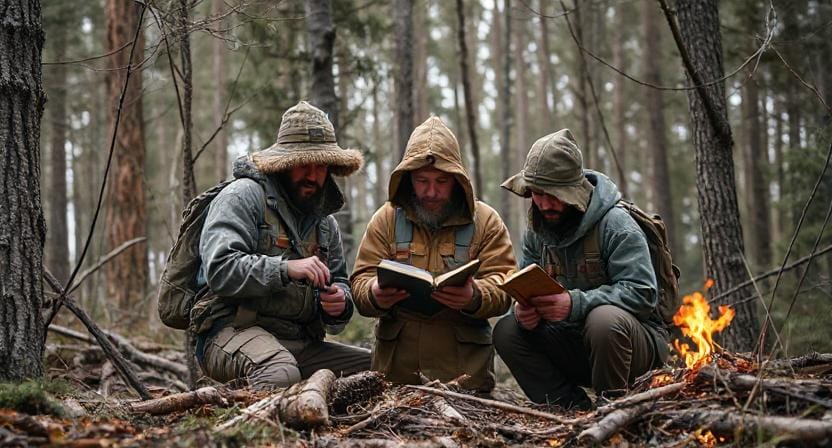
Now that we’ve acknowledged our fears, let’s talk about knowledge—the superhero cape we all need during crises! Honestly speaking, being informed about potential disasters can turn those anxiety-inducing thoughts into manageable plans.
Start by checking out what kinds of emergencies happen in your area. If you live near a fault line, like maybe your neighbors are a little too wobbly for comfort, look up some earthquake safety tips. Seriously, you don’t want to be caught off-guard.
Tornadoes are no joke either. If they’re a worry where you live—and let’s be real, nobody wants their house turned into confetti—you’ll want to know what to do when the warnings come through. Having a plan can really ease your mind.
A neat idea? Look into classes on first aid or emergency preparedness. It’s like getting a superpower! You’ll feel more confident as you learn new skills. Plus, imagine being the cool person at parties who can say, “Oh, I’ve got a first aid kit and I know how to use it!” Trust me, that’ll get people’s attention.
Getting prepared can be fun. It doesn’t have to be all serious. You can even team up with friends. Take a class together. Share tips. Celebrate your newfound knowledge with snacks afterward. It’s all about making those serious topics feel a little less heavy.
So, dive in and get to know what’s out there. You’ll be surprised at how much a little knowledge can help. You’ll feel ready for whatever comes your way, plus armed with cool stories to share!
Creating an Emergency Plan
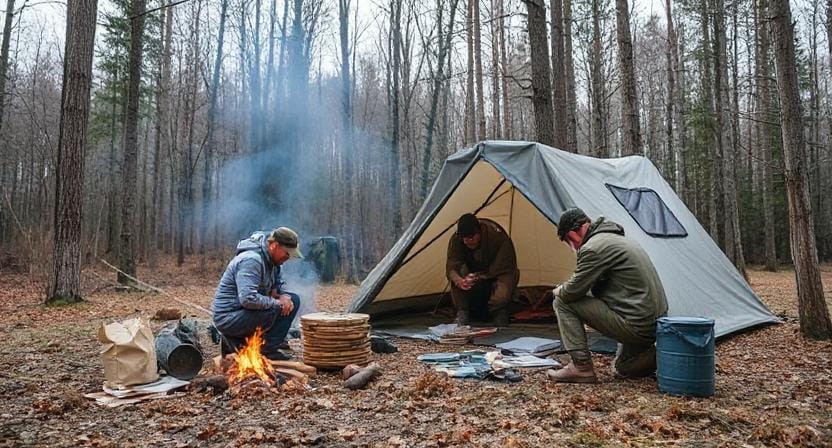
All right! Now we’re getting serious—it’s time to create an emergency plan! This isn’t just any plan; this is *the* plan that will make sure everyone knows exactly what to do when chaos strikes.
Start by getting everyone together. Family, friends, or anyone who’s around. If your family’s idea of planning ahead is just watching the latest Netflix series, it’s time to change that. Talk about different emergencies and what everyone should do. Like, who grabs the dog? And someone else needs to check for snacks, right? Snacks are super important!
Next, let’s think about how to keep in touch. What if your phones don’t work? Not fun. Maybe you can pick spots around town where everyone can meet, or use walkie-talkies. Remember those? They’re like magic gadgets. Kind of feels like being a secret agent, doesn’t it?
Regular practice is key! Do this until everyone feels natural about it. It’s like riding a bike. You don’t want to be scrambling around when things get tricky. Knowing where to grab your emergency stash of chocolate during a blackout? That’s the goal! Everyone loves chocolate, especially in a crisis.
Make it fun. Turn the drills into a game. Laugh a little. This stuff seems serious, but keeping the mood light helps everyone feel less anxious. Before you know it, you’ll all be pros at handling emergencies together, and who knows? You might even build some great memories along the way!
Building Your Emergency Kit
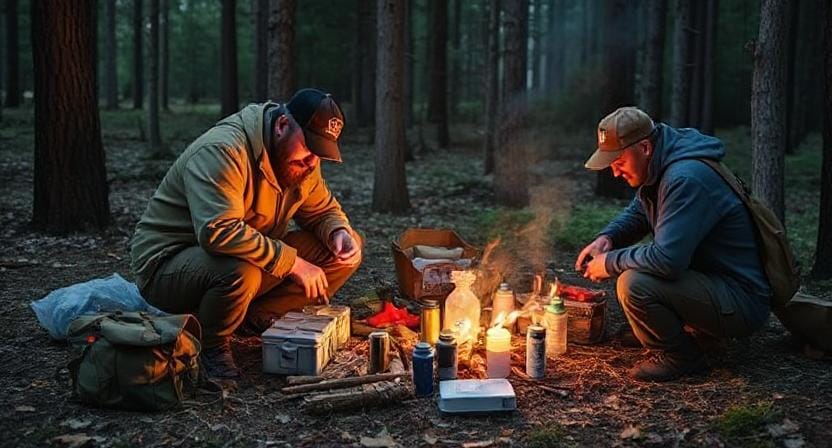
Speaking of chocolate (the ultimate survival food), let’s discuss building your emergency kit! This magical bag should contain everything necessary for surviving at least three days without running water or access to fast food—yikes!
Start with essentials: bottled water (enough for drinking and brushing teeth—not optional!), non-perishable food items like granola bars or canned beans (you’ll thank me later), and hygiene products because personal hygiene doesn’t take vacations—even during crises!
By the way, let’s chat about tools. You know, like a good flashlight? Seriously, they’re lifesavers when it gets dark out of nowhere. Or when you’re stuck in the house and can’t find Wi-Fi while trying to binge-watch your favorite show. Ugh, right? Extra batteries are a must too. No one wants a flashlight that dies when you need it most!
Think about what everyone needs. Medications. They can be super important. You don’t want to be scrambling around looking for them when it’s stressful. Also, comfort items can make a huge difference. Maybe a favorite book or a cozy blanket. A game that everyone enjoys could really help take the edge off. It’s nice to have something fun to focus on when things get a little wild.
Everyone handles stress differently. Some of us might want to curl up with a book, while others would rather play a game. Knowing what makes you and your loved ones feel better is key. Take a moment to think about these things, and get them ready.
When you find those little comfort items, it’s like a warm hug from home, even when things feel uncertain. Keeping those nearby? That’s a smart move!
Staying Calm Under Pressure

Let’s talk about how to stay calm when things go out of hand. Every person who lives in a city definitely needs this talent, right? Staying calm can make a big difference when things go wrong. It helps you not just live, but also do well.
Think about this. You are in a little of trouble, as when the lights go out or you hear loud noises outside. Don’t freak out like you just spilled a giant cup of milk; instead, take a deep breath. Yes, just take a breath. It helps a lot. You’ll be able to think more clearly.
Keep these helpful recommendations in mind. Pay attention to what you can change. If the electricity goes out, you could light some candles. Get your favorite foods and call everyone over. It can feel more like a fun night at camp than a scary one.
Talking might also help. Tell someone how you feel. It could help the room feel less tense. Even a small bit of laughter can make things better. It’s incredible how a funny joke or a story can change the mood of everyone.
And don’t forget to take breaks. If things seem heavy, go outside for a minute. Getting some fresh air can do a lot of good. It’s like giving your brain a little extra energy.
It’s not always easy to be calm, but it gets easier with experience. You’ll get into your groove. When you stay calm, you not only benefit yourself, but you also help others. It’s a win-win!
1. Breathe:
Take a breath. No joke, it’s quite helpful. You can calm yourself faster by taking deep breaths than by finding out that there are still cookies in the jar.
Take a break when your heart is racing like you just ran a marathon. Breathe in through your nose slowly. Wait a second. Then, let it out through your mouth. Do that a few times. You’ll feel the butterflies in your stomach go away. It gives your brain a small break.
Think about how you would feel if you were going to face something hard. It could be a large meeting or a storm that comes out of nowhere. Just stop. If you can, close your eyes. Think of a peaceful spot, like a warm beach or a blanket fort. Breathing helps your body recall that everything is fine.
Taking deep breaths is like magic. They calm your heart and thoughts. You feel like you’re getting lighter. Really! This is a simple approach that can help when things get crazy. Just remember that every time you take a deep breath, you’re moving back into calm. It’s your secret weapon. Use it a lot!
2. Focus:
Focus. Just focus on one thing at a time. It’s way easier than trying to juggle all those thoughts at once, right? Picture this: you’re doing laundry. You pull out the whites, then the colors. You don’t just dump everything in together. That’d be a mess! Same goes for life.
When you try to think about a million things at once, it gets super overwhelming. Your brain feels like it’s in a tornado. Instead, pick one thing. Maybe it’s packing that emergency kit. Or it could be figuring out what to have for dinner. Just one task.
You’ll feel more in control. It’s like untangling a ball of yarn. Focus on one piece, and soon, voila! Everything’s sorted. Plus, when you finish that one thing, the sense of accomplishment is awesome. It’s like finding that missing sock you lost weeks ago!
Taking things step by step makes the big stuff feel smaller. You’re not just spinning your wheels; you’re moving forward. It’s messy out there sometimes, but you can handle it one task at a time. You’ve got this!
3. Stay Positive:
Keep your spirits up. For real. It has the power to transform everything. Think about how ready you are. Imagine it in your imagination. Your emergency kit is all set. You know what to do. Imagine yourself dealing with anything that comes your way like a pro!
You will feel stronger when you think about the nice things. It’s like putting on your favorite warm sweater. You want that heat, right? Bringing up those positive thoughts helps get rid of the dark ones.
If things grow too heavy, don’t keep it to yourself. Get in touch! There is a reason why friends are there. A short conversation can help ease the burden. It’s like when you find out your friend had a bad day too; it makes things seem a little better. You could also phone someone you trust in the neighborhood. You’re not the only one going through this!
It helps to talk things over. It feels like bringing the sun out on a cloudy day. When someone says, “You got this!” it might make everything feel like it’s under control again. Be among people and things that make you feel good. You’re not just getting by; you’re doing well, even when circumstances are hard. That’s the way to go!
Conclusion
So, let’s get started! You have the tools to turn that panic into something you can handle. Are you afraid? It’s just a little monster that’s hard to deal with. It helps a lot to know it. Isn’t knowledge like a warm blanket on a cold night?
Making plans and kits? That’s really smart. Getting what you need means you’re already ahead of the game. You look like a superhero getting ready for the day. It feels amazing, doesn’t it?
Staying calm is really important when things get hard. Imagine that you are a captain leading your ship through harsh waters. You’ve made a plan for your trip. You know where to go. Knowing you’re ready for anything is the best feeling in the world.
Take on those difficulties! Confidence feels good. You can do this. And yes, it involves making sure those fake creatures under the bed stay there. A little bit of humor can help a lot. So, give yourself a pat on the back. You can handle anything, even if it looks daunting at first. And that, my friend, is really cool!
Featured Summary: Fear is a natural emotion, but it doesn’t have to control you. By understanding your fears, planning ahead, building an emergency kit, and staying calm under pressure, you can turn nervous energy into practical preparedness and confidence during uncertain situations.
Frequently Asked Questions
What is the first step to overcoming fear during emergencies?
The first step is to identify your specific fears by writing them down. Seeing them clearly helps you understand what triggers your anxiety and allows you to take practical steps toward preparing for them.
Why is knowledge important in emergency preparedness?
Learning about real risks in your area replaces fear with practical awareness. The more you know about potential emergencies, the easier it is to prepare and respond with confidence.
How do I create a simple emergency plan?
Start by deciding how you will communicate with loved ones during a crisis and choose meeting locations. Then, outline clear roles and steps everyone should follow if an emergency happens.
What should I include in an emergency kit?
Your kit should include water, non-perishable food, a flashlight, batteries, hygiene items, medications, and comfort items like blankets or basic tools to help you through challenging situations.
How can I stay calm during stressful situations?
Use simple techniques like deep breathing, focusing on one task at a time, and staying positive. These actions help you think clearly and respond instead of panic.
How often should I review or practice my emergency plan?
Review your plan at least twice a year and practice with your household so everyone remembers their role. Regular practice builds confidence and reduces stress during real emergencies.
Can fear actually be helpful?
Yes. Fear can motivate action when used correctly. Instead of avoiding it, use fear as a trigger to get prepared, learn new skills, and build confidence in your ability to handle challenges.
Suggested External Resources:
Emergency Preparedness Guide
https://www.ready.gov/plan
How To Build an Emergency Kit
https://www.redcross.org/get-help/how-to-prepare-for-emergencies/survival-kit.html
Understanding Natural Disasters
https://www.ncdc.noaa.gov/stormevents/

Kevin Collier is a seasoned outdoor enthusiast and writer for Trekbug.com, specializing in outdoor adventures, survival strategies, and prepping insights. With a deep love for nature and a commitment to self-sufficiency, Kevin empowers readers to embrace the wilderness confidently. He shares valuable tips, practical techniques, and inspiring stories, helping both novice and experienced adventurers develop essential skills for surviving and thriving in the great outdoors.



